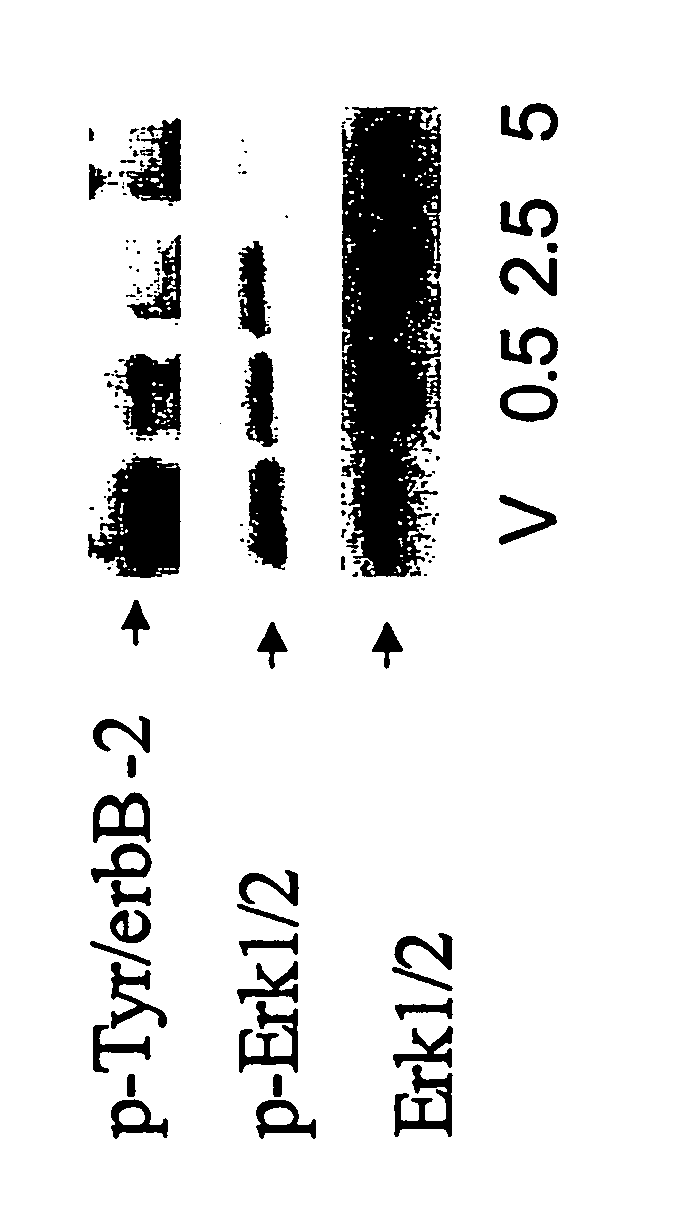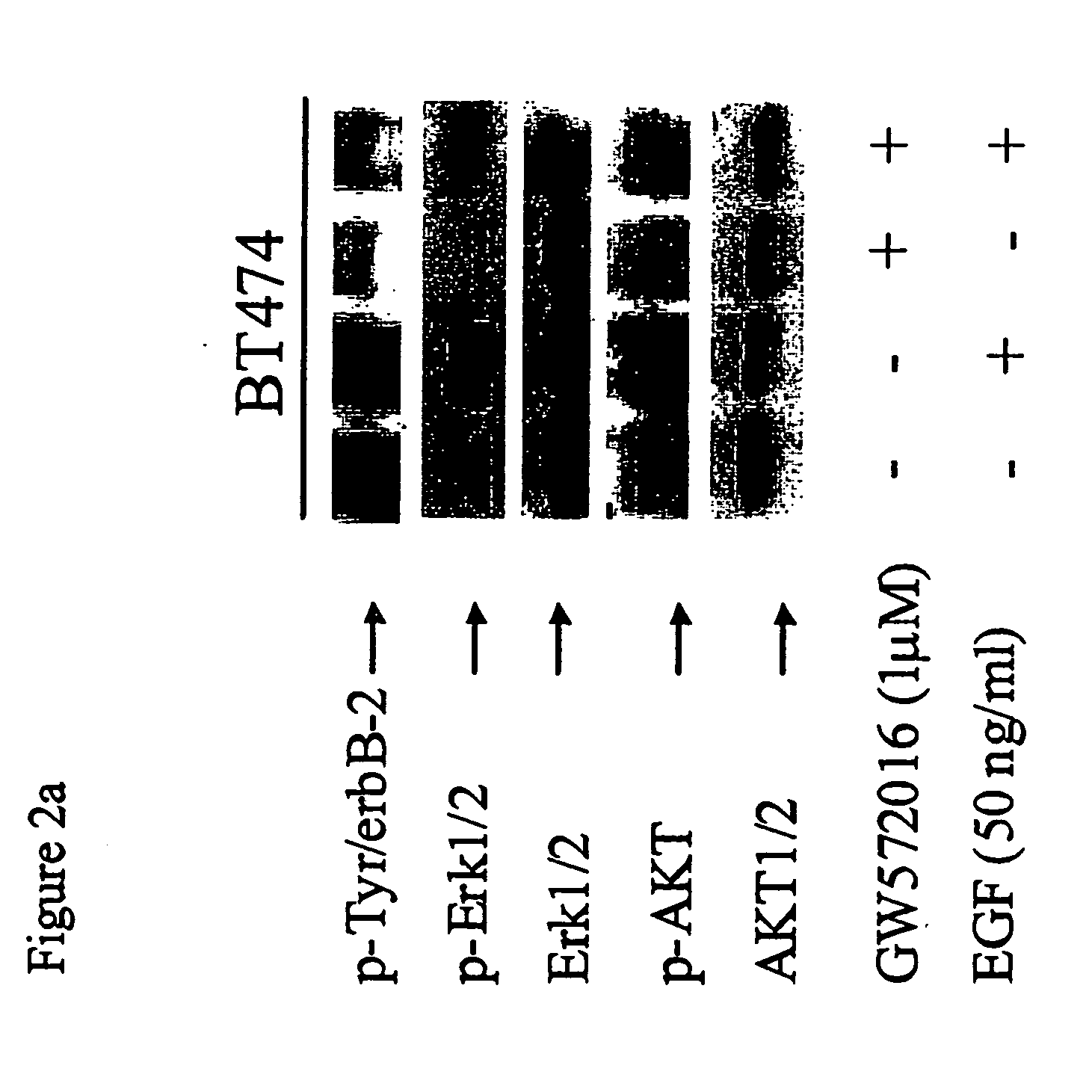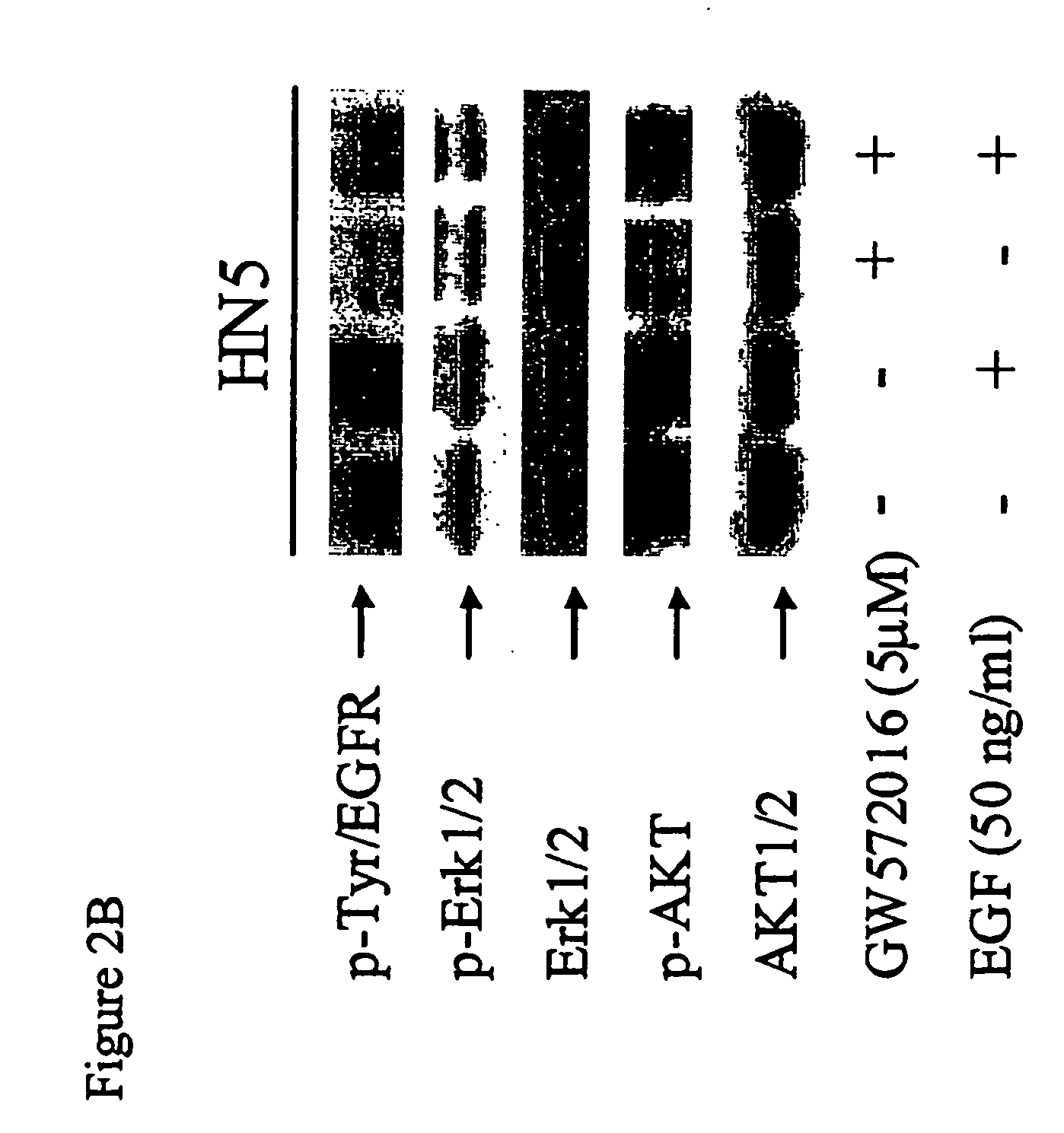Predictive markers in cancer therapy
a cancer and marker technology, applied in the field of predictive markers in cancer therapy, can solve the problems that inhibiting specific receptor tyrosine kinases may not be an effective therapeutic strategy in all individuals, and the combination approach may be problematic, so as to reduce the baseline (pre-treatment) level of erbb2, and reduce the baseline (pre-treatment) level of egfr phosphorylation
- Summary
- Abstract
- Description
- Claims
- Application Information
AI Technical Summary
Benefits of technology
Problems solved by technology
Method used
Image
Examples
example 1
Materials and Methods
Materials
[0081] The erbB2 overexpressing human breast adenocarcinoma cell line, BT474, was obtained from the American Type Culture Collection (Rockville, Mass., USA). The HB4a cell line was derived from human mammary luminal tissue, and erbB2 transfection of HB4a yielded the cell line HB4a C5.2 (Harris et al., Int. J Cancer., 80:477 (1999)). The S1 cell line was established by sub-cloning HB4a C5.2, and was chosen for further studies as it expressed high levels of phosphorylated erbB2 protein. The EGFR overexpressing LICR-LON-HN5 head and neck carcinoma cell line, HN5, was kindly provided by Helmout Modjtahedi at the Institute of Cancer Research, Surrey, U.K.
[0082] EGF was purchased from Sigma Chemical (St. Louis, Mo., USA). Phospho-EGFR and phospho-erbB2 were puchased from Chemicon and NeoMarkers, respectively. Anti-phosphotyrosine antibody was purchased from Sigma Chemical. Anti-EGFR (Ab-12) and anti-c-erbB2 (Ab-11) antibodies were from Neo Markers (Union...
example 2
GW572016 Inhibits erbB2 Tyrosine Phosphorylation and Downstream Activation of Erk1 / 2
[0099] The effects of GW572016 on the activation-state of erbB2 and EGFR, as well as on downstream proliferation and survival pathways, were examined using S1 cells, which overexpress phosphorylated erbB2. S1 cells were established by single cell cloning of Hb4ac5.2 cells, a mammary epithelial line stably transfected with erbB2 (Harris et al., Int. J. Cancer., 80:477 (1999)). GW572016 inhibition of erbB2 tyrosine phosphorylation (i.e. inhibition of the formation of p-Tyr / erbB2) was dose-dependent. Partial inhibition was seen at 500 nM, with complete inhibition at 2.5 μM after 72 h (FIG. 1).
[0100] ErbB2 overexpression is associated with the activation of downstream pathways involved in the propagation of proliferative signals such as Erk1 / 2 MAP kinases (Janes et al., Oncogene, 9:3601(1994)). After 72 h exposure, GW572016 inhibited activated, phosphorylated Erk1 / 2 (p-Erk) by more than 50% at 500 nM a...
example 3
GW572016 Blocks EGF-Induced Activation of Erk1 / 2 and AKT in Both erbB2 and EGFR Overexpressing Carcinoma Cells
[0101] EGF was recently shown to reverse growth inhibition of OVCA 420 ovarian carcinoma cells treated with combination Herceptin™ and C225 (mAbs targeting erbB2 and EGFR, respectively (Ye et al., Oncogene, 18:731 (1999)). The authors concluded that dual inhibition of EGFR and erbB2 would result in more effective anti-tumor activity.
[0102] Since EGF levels have been shown to be elevated in some cancer patients (Grandis et al., J. Natl. Cancer Inst., 90:824 (1998); Albanell et al, Cancer Res., 61: 6500 (2001)), we next examined whether EGF could reverse GW572016 inhibition of activated EGFR, erbB2, and downstream effector molecules.
[0103] BT474 is an erbB2 overexpressing breast carcinoma line that also expresses EGFR, albeit at lower levels. BT474 cells constitutively express activated erbB2 (p-Tyr / erbB2). BT474 cells were cultured in the presence or absence of GW572016 (1...
PUM
| Property | Measurement | Unit |
|---|---|---|
| Time | aaaaa | aaaaa |
| Time | aaaaa | aaaaa |
| Fraction | aaaaa | aaaaa |
Abstract
Description
Claims
Application Information
 Login to View More
Login to View More - R&D
- Intellectual Property
- Life Sciences
- Materials
- Tech Scout
- Unparalleled Data Quality
- Higher Quality Content
- 60% Fewer Hallucinations
Browse by: Latest US Patents, China's latest patents, Technical Efficacy Thesaurus, Application Domain, Technology Topic, Popular Technical Reports.
© 2025 PatSnap. All rights reserved.Legal|Privacy policy|Modern Slavery Act Transparency Statement|Sitemap|About US| Contact US: help@patsnap.com



